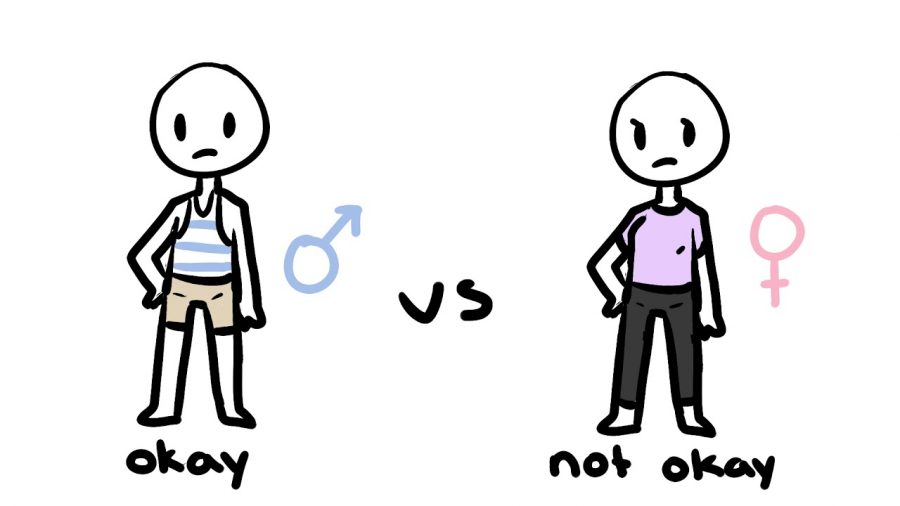Dress Code Shmesh Code
September 10, 2021
School dress codes are put in place to make learning more beneficial, but it often does the complete opposite. Ashlyn Johnson stated in an interview that she was told to put on a sweatshirt because her shoulders were too distracting. In an anonymous google form, a contributor said that they got dress coded for wearing a shirt that was advertising a bar.
Forty secondary students responded to an anonymous survey asking if a school dress code was necessary. Sixty-five percent felt that the school dress code was not necessary.
A couple of opinions were that “People are able to express themselves by how they dress. If you take that away they won’t be comfortable coming to school.” Another mentioned that “it oppresses my first amendment rights.”
The students that believe the dress code is necessary support it “because I ain’t wanna see some certain stuff” and believe that, “people should be responsible for attire that won’t offend others.”
The school dress code is intended to prevent people from being distracted in class, but pulling people out of class to go change is doing the exact same thing. This is a double standard.
Wearing hats in school is a big problem for many. The school handbook states that “hats, caps, bandanas, or full cover headbands may not be worn in the building during school hours, and they are not allowed in the auditorium at all unless being worn for religious reasons.” Many of us that have classes with Caden Issacson know that he is asked to take his hat off almost daily. In a recent interview with Caden, he said that this is the dress code rule that mostly affects him. At the same time he is being corrected, there are staff members who are frequently working in the school wearing hats. Also, faculty members often wear hats at teacher in-service meetings.
Additionally, the school handbook states that students are expected to keep their hats in their cars or locker. This dress code rule is certainly not followed because students are asked to remove hats at the beginning of almost every class after wearing them during the passing period. The rule becomes biased when female students are expected to keep covered for the remainder of the day while male students are allowed to wear their hats in the halls. So, should Ashlyn be allowed to reveal her exposed shoulder alongside Caden wearing his hat?
The handbook rules seem equal for both genders. However, it seems that teachers and administrators have a tendency to enforce the rules more strictly for girls than for boys.
A common question among females at SES is “Why am I not able to wear a crop top, but male peers are allowed to wear shirts with cutouts?” Males often end their days wearing shirts that have cutouts larger than a standard sleeve size. This is against the school dress code. It’s biased for males to not get called out for wearing a shirt that shows almost their entire chest and torso while females are frequently called out for showing a little bit of their stomach.
One female that has been called out for showing “too much stomach” is Haleana Simmons. When Haleana was interviewed, she mentioned that she is not dressing to get attention. The struggle that she described is the way shirts are made versus the way she is built. She said that her midriff might show more than someone else wearing the same shirt.
The handbook rules that apply to males seem to be based on issues of respect. But the rules that apply to girls’ dress code tend to be based on “preventing distractions.” Dress coding female students for being distracting is a form of victim-blaming. In her interview for the Trojournal, Haleana made a very strong point when she asked, “Why should we, as women, have to retrain ourselves to wear something just because men can’t (control their physical reactions)?”
Dress codes are difficult. They are difficult to follow and difficult to enforce. The hardest part about the dress code is consistency. If dress codes are going to exist, it is most important that they are enforced with respect and consistently.








